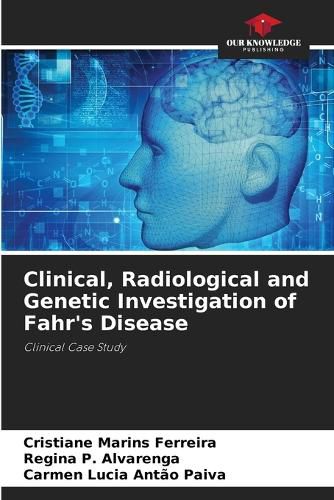Readings Newsletter
Become a Readings Member to make your shopping experience even easier.
Sign in or sign up for free!
You’re not far away from qualifying for FREE standard shipping within Australia
You’ve qualified for FREE standard shipping within Australia
The cart is loading…






Fahr's disease (FD) or Familial Primary Calcification of the Basal Nuclei is a rare neurodegenerative disease, with an incidence of less than 1 in 1 million inhabitants (SALEEM et al., 2013) worldwide, autosomal dominant, characterised by symmetrical and bilateral calcifications in the basal nuclei (nb) and other areas of the cerebral cortex, thus allowing for diverse clinical presentations, mainly with extrapyramidal and psychiatric symptoms. In recent years, mutations in four genes have been identified as causing the disease (SLC20A2, PDGFRB, PDGFB and XPR1) allowing for a specific genotype-phenotype correlation as shown in Table 1 (TADIC et al., 2015). The author of this research is a neurologist working in the field of neuropediatrics. Through clinical history and examinations, she identified the likelihood of FD in the proband and found ways to develop this work in postgraduate studies.
$9.00 standard shipping within Australia
FREE standard shipping within Australia for orders over $100.00
Express & International shipping calculated at checkout
Fahr's disease (FD) or Familial Primary Calcification of the Basal Nuclei is a rare neurodegenerative disease, with an incidence of less than 1 in 1 million inhabitants (SALEEM et al., 2013) worldwide, autosomal dominant, characterised by symmetrical and bilateral calcifications in the basal nuclei (nb) and other areas of the cerebral cortex, thus allowing for diverse clinical presentations, mainly with extrapyramidal and psychiatric symptoms. In recent years, mutations in four genes have been identified as causing the disease (SLC20A2, PDGFRB, PDGFB and XPR1) allowing for a specific genotype-phenotype correlation as shown in Table 1 (TADIC et al., 2015). The author of this research is a neurologist working in the field of neuropediatrics. Through clinical history and examinations, she identified the likelihood of FD in the proband and found ways to develop this work in postgraduate studies.